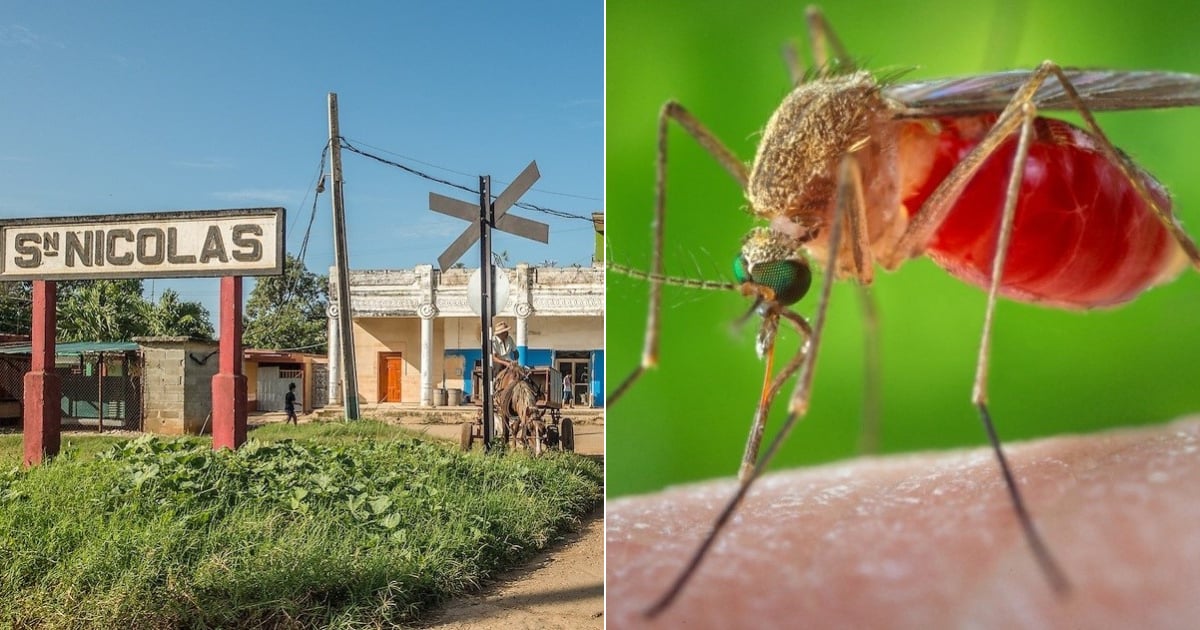The Ministry of Public Health (MINSAP) of Cuba confirmed on Tuesday the detection of the Oropouche virus in the municipality of San Nicolás, located in Mayabeque. This follows reports of its presence in the provinces of Santiago de Cuba and Cienfuegos in recent weeks.
Dr. Ramón Aguilar Castillo, the Director of Public Health in the area, stated that the virus was identified "through actions of monitoring and surveillance of unspecified febrile syndromes" and confirmed via samples studied at the national reference laboratory of the Pedro Kourí Institute (IPK) in Havana. Aguilar revealed that there are cases of the disease in the northern and southern urban zones, although he did not specify the number of infected individuals, according to a report by local broadcaster Radio Mayabeque.
He added that "entomo-epidemiological actions are being taken to break the transmission chain and control the disease as quickly as possible." Subsequently, fumigation will be carried out in rural settlements. Aguilar urged the population "to work together with Public Health regarding hygiene" and to eliminate micro-dumps.
Understanding the Oropouche Virus
The Oropouche fever is caused by the virus of the same name. It is transmitted by the midge Culicoides paraensis—not detected in Cuba but present in the Americas—and by the mosquito Culex quinquefasciatus, which is common on the island and breeds in any type of water, including sewage and contaminated water. This exacerbates the danger in the country given the poor hygiene conditions.
In late May, MINSAP confirmed that the febrile infectious outbreak detected for weeks in two municipalities of Santiago de Cuba was caused by this virus and announced that it had already spread to the Cienfuegos territory. However, Cuban health authorities have not yet disclosed the number of patients diagnosed with the disease. They have also not informed how the virus spread between these two territories, whether through contagion or if they are autochthonous cases.
Until now, no severe, critical, or fatal cases have been reported, according to the national director of Epidemiology, Dr. Francisco Durán García, in a special appearance on the National Television News (NTV).
This is the first time the Oropouche virus has been detected in Cuba since its discovery in Trinidad and Tobago in 1955. The disease has an incubation period of five to seven days, and its symptoms are similar to those of dengue, Zika, and chikungunya: fever, headaches, muscle and joint pains, and occasionally, vomiting and diarrhea. There is no specific treatment for it, only measures to alleviate the symptoms.
The epidemiological alert from MINSAP about the Oropouche virus was not announced until two weeks after the first cases with "unspecified febrile syndromes" were reported in communities of the Songo-La Maya and Santiago de Cuba municipalities. The alert about what was happening emerged on social media, based on reports from journalist Yosmany Mayeta Labrada, a resident of the United States, who received the first news about the epidemiological outbreak from sources in Santiago de Cuba.
FAQs About the Oropouche Virus Outbreak in Cuba
Below are some frequently asked questions and answers regarding the recent Oropouche virus outbreak in Cuba.
What is the Oropouche virus?
The Oropouche virus is a disease-causing agent transmitted by certain midges and mosquitoes. It causes symptoms similar to dengue, Zika, and chikungunya, including fever, headaches, muscle and joint pains, and sometimes vomiting and diarrhea.
How is the Oropouche virus transmitted?
The virus is transmitted by the midge Culicoides paraensis and the mosquito Culex quinquefasciatus. While the midge has not been detected in Cuba, the mosquito is common on the island.
What measures are being taken to control the outbreak?
Authorities are conducting entomo-epidemiological actions to break the transmission chain and are planning to fumigate rural settlements. The public is also urged to maintain hygiene and eliminate micro-dumps.
